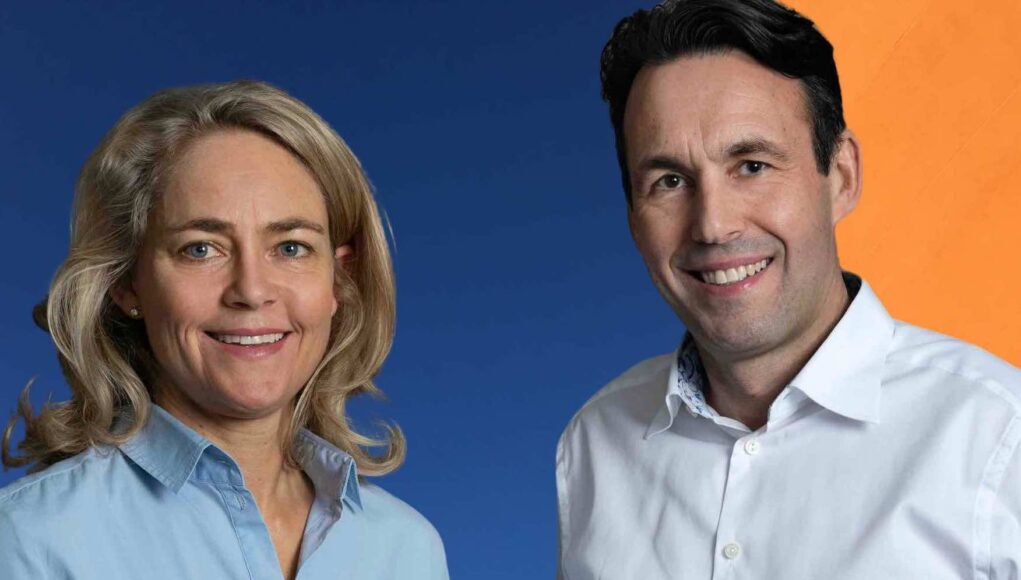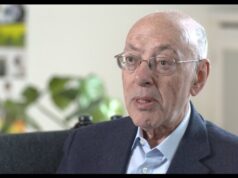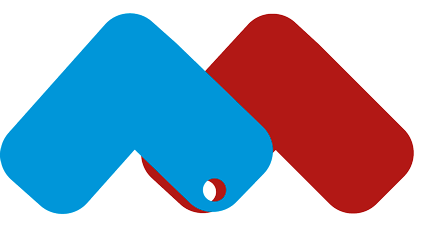Simplicity Wins in a Complex World
As new and old economies and corporations rise and fall around us, as big data, AI, and pandemics are realities embedded in everyday life, and as investors grow more uncertain and less patient, great leadership is under pressure from all sides. Therefore, it is more important than ever to bring out the best in each person working with us.
While complexity is increasing with faster-paced changes and less predictability, we believe a key parameter for successful leadership is simplicity. We need simple, yet powerful and effective tools to guide us and our teams through everlasting and perpetual changes. That is the foundation on which Fire & Shield is built.
As seasoned practitioners, we and our colleagues in management and leadership have repeatedly felt frustrated with many of the existing leadership tools and their embedded complexity. Therefore, 17 years ago, we set out to decode the ‘essence of performance’ in the simplest possible manner, posing the question: How can leaders increase performance in a sustainable manner where financial and personal growth go hand in hand?
______
EXPLORE ALSO: 8 Complexity Management Strategies that will Help you Cope
______
The Fire & Shield Methodology
We approached the challenge head-on, exploring the need for both a simple and practical way to create and increase true ‘best performance’. That means a high level of performance that is durable over time as opposed to a peaked high performance, which is destined to burn out.
Through a combination of practical application as well as trial and error – while resting on classic organizational behavior tools (Burnes, 2004; Kotter, 2007; Schein, 2010) – we developed, tested, and refined the Fire & Shield Method over the timespan of a decade.
Traditionally, management theory and practice often label leaders as either hard or soft, insisting that pushing harder is the best, and sometimes the only way, to deliver on tough deadlines and hard targets, as if input determines output, i.e. more hours = more output.
This is not the case with knowledge-based jobs (Bonassi, 2022). It is an outdated polarity that doesn’t match the daily lives of leaders who are on the grind of pushing for results while trying to prevent burnout (Nye Jr, 2008; Stress, 2022).
This is where the Fire & Shield Method comes in. It proposes that leaders should concern themselves with two factors: FIRE, the feeling of being challenged (‘true sense of urgency’) and SHIELD the feeling of emotional safety in the workplace (Edmondson, 1999; Elize Dimare, 2018).
By bringing these two elements into balance – matching the pressures to handle external challenges with the need to create a safe environment for employees – the leader will increase both well-being and capabilities, and through this, organizational performance.
While the Fire & Shield Method may have Nordic roots, we have applied it in both international and national settings, yielding consistent positive outcomes(Elize Dimare, 2024): It works because the need to feel safe and the need to feel successful are basic human traits that supersedes national, cultural, and ethnical barriers.
At the heart of the Fire & Shield methodology are these two elements: FIRE and SHIELD.
FIRE
Fire is the amazing feeling of rising to a challenge that you are not 100% sure how to handle and succeeding anyways. It is a sense of stepping up to the next level and it gives a feeling of accomplishment. It means speed of execution, decisiveness, and accepting that you don’t have to be right or know it all before you make your move. It spurs growth for both organizations and individuals. We become more adaptable, determined, and better at following through.
FIRE is inspired by the notions of ‘burning platform’ and ‘a true sense of urgency,’ as well as Kurt Lewin’s ‘Unfreeze’ phase(Kotter, 2007; Lewin, 1947). When we experience high levels of FIRE it feels fantastic: A dynamic, driven energy where people make decisions and can see their achievements grow, day by day. In contrast, a low-FIRE environment feels draining and boring, with endless meetings, no real decision-power delegated to the organization, and energy and initiative literally being sucked out of everybody. In a busy, modern work life it is tempting to dismiss FIRE as something bad, but it is not. It contributes a sense of accomplishment signaling to ourselves and others that we are making a difference.
SHIELD
Shield is that feeling of being safeguarded by your superior who has your back(Maslow, 1954). High-SHIELD allows people to focus on their work without the distractions of worrying, scheming political agendas, greasing up to someone, or decoding unwritten rules and policies. It includes psychological safety as described by Edmondson, as well as a healthy work environment and most importantly something as simple as trust(Edmondson, 1999). It is about trusting your boss, your colleagues, and your organization to do their best and honor agreements at any time. It grows with transparency, honesty, fairness, and emotionally stable behavior from those in charge.
Our brains are less effective in fight or flight mode, and severe stress often comes from a low-SHIELD work environment(Cannon, 1963; Thase et al., 2002). SHIELD does not relate to job security, but rather to the security of knowing: “I am employable because I have developed and grown in this job, and if for some reason I am made redundant, I trust my departure will be handled fairly and respectfully”.
When leaders make laughable, irrelevant, or moronic rules, create A- & B-teams in the organization, gossip or lie about what is going on, it harms performance. It does so because employees worry and can’t focus on their jobs and thus divert attention to irrelevant and nonproductive activities. The time spent checking colleagues’ calendars, bad-mouthing bosses, or calling our friends to complain about unfair treatment is non-productive time. It is unnecessary time and resources spent by the company or employee and a direct result of low-SHIELD.
The Fire & Shield methodology states that organizations perform best when both FIRE and SHIELD are high and at a balanced level. If FIRE is higher than SHIELD the responsible leader focuses on SHIELD and vice versa(Hersey & Blanchard, 1969). It is the task of responsible leaders to create the balance.
Use figure 1 below to visualize the present levels of FIRE and SHIELD in your organization.
Your main goal as a leader is to create a balance by increasing the factor that is lacking. That is, if SHIELD is higher than FIRE, your focus is on increasing FIRE, and if FIRE is lower than SHIELD, your focus is on increasing SHIELD. That way, you initially focus on creating a balance before moving up towards what we have labeled ‘Best performance’.
_____
READ ALSO: What is Psychological Safety and How to Create it?
_____
Residing in the ‘best performance’ state is hard and tedious work, which requires constant effort and attention from highly responsible leaders aiming to increase and balance both FIRE and SHIELD. A constant and perfect balance is rarely seen as it is constantly challenged by change, due to both inside and outside forces in the organization. Think of FIRE and SHIELD as your two handles, where you can only turn the handle up and never down.
Furthermore, the matrix in Figure 1 illustrates how we have repeatedly observed that high-FIRE and low-SHIELD create burnout environments, while high-SHIELD and low-FIRE create an environment that fosters boreout (Philippe Rothlin, 2008). If both FIRE and SHIELD are low, it will be difficult to create changes and require a strong effort, which is why we have (with perhaps misplaced humor) labeled it “Get out”.

Figure 1: The Fire & Shield
The Fire & Shield Process
When introducing the Fire & Shield Method, there are three phases, which we have observed repeatedly when going through organizational transformations. We have labeled them: ‘Dare’, ‘Acceleration’ and ‘Long Haul’. Within each of these phases, you’ll find a variety of steps and tools designed to assist you in navigating through the specific challenges of that phase effectively.
The Fire & Shield toolbox comprises seven steps aimed at enhancing performance. Each step entails tools in both a FIRE-version and a SHIELD-version. If you aim to boost FIRE, utilize the FIRE-version of these tools. Conversely, if you seek to enhance SHIELD within your organization or team, opt for the SHIELD-version of the tools.
The Three Phases of Organizational Transformation

Figure 2: The Fire & Shield Toolbox
The following unfolds the three phases – the seven steps and the FIRE and SHIELD tools.
- Dare: Getting started is often the biggest hurdle. It takes courage to face the truth about your organization, yet, if true pains and challenges are not acknowledged, creating change has few chances of success. Many companies never make it past this phase. It is either too painful or there is too much loss of personal prestige in facing the uncomfortable truth of the status quo.
The step here is called ‘Face Reality’ and implies that you get a full view of the status quo. If you are to increase FIRE, you will need to get more data and a few essential KPIs. This tool is aptly named ‘Family Portrait’. If you are to increase SHIELD, you will need to get more ‘soft’ data and listen to your team’s input and concerns (a tool called ‘All Ears’).
- Acceleration: One of the biggest challenges we face is to acknowledge and prioritize to start acting differently. The two most crucial aspects in this phase are setting the right team to match the challenge (using the step ‘Organizational Clean-up’) and addressing the leaders’ behavior (by diving into the step ‘Change Behaviour’).
As leaders, we may shy away from assessing the people we work with and provide them with honest and fair feedback/feedforward. Notwithstanding, this may be the greatest gift they ever get from us as their leader. The acceleration phase is also the time to start making uncomfortable decisions such as closing a project or letting an employee who drains the team go.
If you are to increase FIRE, you will probably want a more driven and ambitious team (which you can get by implementing the tool ‘Offensive Line’) but you need to change the pace and speed up your actions and decisions (called ‘Buckle Up’). If you are to increase SHIELD, you need to make sure no one on your team holds destructive behavior (called ‘Dust Buster’) and you most likely need to slow down your pace and focus on (re-)building trust (called ‘Act the Words’).
- Long Haul: The difference between successful and less successful implementation of new leadership practices traces back to stamina and perseverance. Do you have what it takes to keep going in the right direction despite the adversity you may experience? During the ‘Long Haul’, as a leader, you demonstrate to the skeptics that you are genuine, you back up your words with actions, and you’re ready to ‘walk the talk’.
Organizations have witnessed numerous waves of well-intentioned changes. However, skepticism often arises when these efforts seem to fizzle out after just a few months, leaving behind nothing more than a few attractive “inspirational” posters in the reception area.
The ‘Long Haul’ phase comprises four steps. The first, known as ‘Demonstrate Will 2 Change’, essentially involves solidifying the initiatives introduced in the Acceleration phase through the ‘Change Behavior ’ step. In simpler terms, it means sticking with whatever changes were initiated, week after week. If the aim is to boost FIRE, you ‘Roll Up Your Sleeves’ and maintain the new pace you’ve set. Conversely, if the goal is to enhance SHIELD, it involves remaining present, honest, transparent, and reliable, a tool referred to as ‘Back to Presence’.
The second step calls for a focus on ‘Communication’. If you are to increase FIRE your communication must be focused on simple, visual representation of data (use the tool ‘1 Picture & 1000 words’). To enhance SHIELD, prioritize and maintain face-to-face communication as much as possible (called ‘In Your Face’).
The third step in this phase is all about keeping your focus on the results, called ‘Result Focused Management’. If you are to increase FIRE, you need to build a routine of presenting the team’s actual performance, i.e. weekly, easy-to-grasp sales reports (this tool is called ‘Let Them Know’). If you want to increase SHIELD, your focus should also be on celebrating what you have already achieved as a team (aptly named ‘We Did It’).
Finally, you need to create a ‘Basis for Empowerment’. Delegation, growth, and continuous development require the foundation for truly empowering our team, whether large or small. If you are to increase FIRE, you must focus on ‘Trust’, allowing your team to make their own mistakes. If your wish is to increase SHIELD, you build the basis for empowerment by making sure that you are as predictable, hence as reliable as possible (called ‘No Jack in the Box’).
Fire & Shield: Pioneering Responsible Leadership for the Future
Being a responsible leader is a continuous effort. Even great leaders and managers with the best intentions and long impressive track records can create unfortunate work environments or be caught off guard in an ever-changing world.
We have created the Fire & Shield methodology as a simple way to increase responsible leadership We have experienced first-hand how it makes a significant difference by creating an emotionally safer work environment while increasing performance. It may feel counterintuitive to be calm and assertive during times of pressure and pushy in times of ease, however, we’ve found this to be a shortcut that works(Elize Dimare, 2020, 2022; Robert E. Kaplan, 2013).
_____
SEE ALSO: What is Responsible Leadership?
_____
Introducing a simple yet effective leadership methodology helps overworked leaders and managers in a dynamic world to bring about useful changes. We see the Fire & Shield as well suited for the technology-driven and high-paced work environments of the future.
Ultimately, if we, as leaders, overlook the importance of fostering a “sense of safety,” we forfeit our fundamental responsibility to enhance performance. Sometimes the fastest way to get there is to go slow. A healthy work- environment is not in opposition to better financial results, but an intermediate variable for creating lasting performance.
List of References
Bonassi, K. (2022). Employee Productivity vs. Hours Worked. https://hubstaff.com/blog/employee-productivity-vs-working-hours/
Burnes, B. (2004). Kurt Lewin and the planned approach to change: a re‐appraisal. Journal of Management Studies, 41(6), 977-1002.
Cannon, W. B. (1963). The Wisdom Of The Body. W. W. Norton & Company.
Edmondson, A. (1999). Psychological safety and learning behavior in work teams. Administrative Science Quarterly, 44(2), 350-383.
Elize Dimare, J. S. (2018). Når ledelse skaber succes. Varius Business.
Elize Dimare, J. S. (2020). Andre menneskers penge og andre menneskers liv. Content Publishing.
Elize Dimare, J. S. (2022). Nomadeledelse. Content Publishing.
Elize Dimare, J. S. (2024). Cases. Fireandshield.com. https://www.fireandshield.com/cases/
Hersey, P., & Blanchard, K. H. (1969). Management of organizational behavior: Utilizing human resources. In: Academy of Management Briarcliff Manor, NY 10510.
Kotter, J. P. (2007). Leading change: Why transformation efforts fail.
Lewin, K. (1947). Frontiers in group dynamics: Concept, method, and reality in social science; social equilibria and social change. Human relations, 1(1), 5-41.
Maslow, A. H. (1954). Motivation and Personality. Harper & Row Publishers.
Nye Jr, J. (2008). The powers to lead. Oxford University Press.
Philippe Rothlin, P. R. W. (2008). Boreout!: Overcoming Workplace Demotivation Kogan Page.
Robert E. Kaplan, R. B. K. (2013). Fear your strengths: what you are best at could be your biggest problem. Berrett-koehler.
Schein, E. H. (2010). Organizational culture and leadership (Vol. 2). John Wiley & Sons.
Stress, T. A. I. o. (2022). Stress Research.
Thase, M. E., Jindal, R., & Howland, R. H. (2002). Biological aspects of depression.








